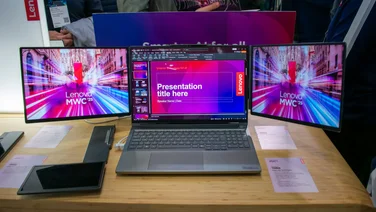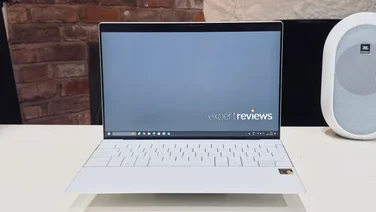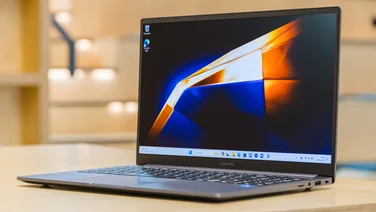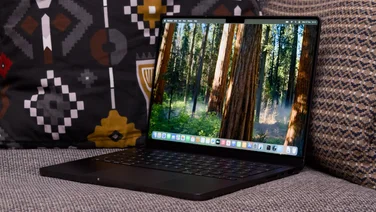To help us provide you with free impartial advice, we may earn a commission if you buy through links on our site. Learn more




With its black plastic chassis and monotone colour scheme, Toshiba’s Satellite P750-115 doesn’t look particularly exciting. However, beneath the plain exterior lies an incredibly competent multimedia machine, powered by one of Intel’s fastest mobile processors.
The Core i7-2630QM runs at 2GHz, which might seem like a sedate clock speed, but it can jump up to 2.9GHz using Turbo boost – and that’s on all four cores. Combined with 8GB of RAM, it breezed through our multimedia benchmarks with an overall score of 78, proving it can cope with almost any task. Despite having so much power, Intel’s latest processors are also frugal with power so the P750 lasted a respectable four and a half hours in our light-use battery test.
Although Intel’s dedicated graphics chip has enough power to play Blu-ray films, thankfully Toshiba has also installed an Nvidia GeForce GT 540M with 2GB of dedicated video memory. This managed a smooth 41.7fps in our Dirt 3 benchmark, showing that even modern games will be playable at reasonable detail settings.

It’s unfortunate that Toshiba hasn’t paired the Blu-ray drive with a screen that can do Full HD films justice, as the 1,366×768 screen is only big enough to show all the detail in 720p video. Even so, the backlight was even, colours looked natural and images were very sharp, but the overall image quality is let down by very poor viewing angles. There’s a reasonable amount of screen tilt, but not enough to correct the loss of contrast at anything other than squarely facing the screen.

Audio quality is slightly better than the sub-par screen, but not beyond our expectations for a laptop. The speakers might be Harmon/Kardon branded, but the lack of bass came as no surprise. Volume was reasonable and the mid-range was clear, if slightly tinny.
In everyday use, we found the keyboard flawed: the flat, glossy keys meant fingers easily slipped off when typing. Even so, the keys are all well-spaced and a good size. A dedicated number pad will help with text entry, but like the QWERTY keyboard, there’s not enough feedback from each press. We often felt like we hadn’t pressed a key, despite it registering in the application we were using. The glossy finish on the wrist rest also becomes a magnet for fingerprints when typing.

The touchpad fares better: the thin illuminated strip above it is one of the Satellite’s few design flourishes, but it does help you find it in the dark. The matte finish made finger movement very smooth and the touchpad buttons, while slightly stiff, give a definite click with each press.
Connectivity is roughly in line with other high-end laptops. Four USB ports, two of which are the faster USB3 standard, a multi-format card reader, headphone and microphone audio jacks and a Gigabit Ethernet port for networking are all welcome inclusions. One of the USB ports supports charging during Sleep mode, a useful technology that Toshiba has also applied to the microphone jack. If you plug in an iPod or MP3 player, it will play back through the laptop speakers, even when turned off.

The P750-115 has most of the features we would expect in a high-end multimedia laptop, but we’d also expect slightly more finesse for £1,000. As it is, the mediocre keyboard and lack of a Full HD screen means it loses out to more well-rounded machines from other manufacturers. A cheaper alternative is the excellent MSI GE620.






